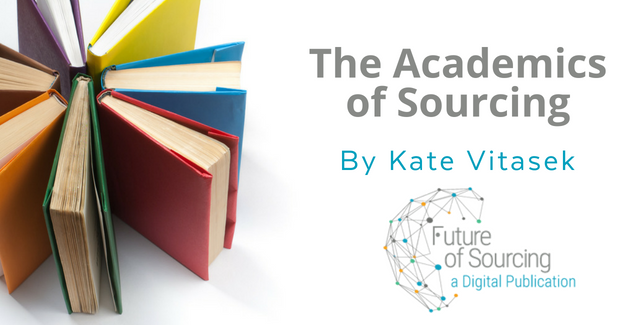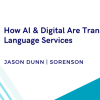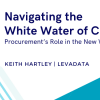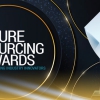This article originally appeared in Outsource Magazine Issue #29 Autumn 2012
After two years of blogging for Outsource I hope readers have at least heard of Vested Outsourcing and maybe even read one of our three books. But perhaps you have some doubts and concerns, so you are still waiting on the sidelines. All too often we hear, “I like the theory of Vested, but does it really work in the real world? Are companies (especially ones people have heard of!) adopting the Vested approach?”
Short and simple: the answer is a resounding YES! And we are featuring our favourite cases studies in our latest book Vested: How P&G, McDonald’s and Microsoft are Redefining Winning in Business Relationships, by myself and Karl Manrodt with Jeanne Kling. Vested is a behind-the-scenes look at the separate and often inspirational journeys that big and small organisations have taken to “vest for success” following the five rules of the Vested approach for developing highly collaborative relationships.
So just what is Vested?
The original research leading to the Vested business model was a collaboration among the University of Tennessee (UT), the United States Air Force, and the Defense Acquisition University. We studied some of the world’s most successful outsourcing relationships with a simple goal in mind: find a better way to outsource services.
The result is Vested: a hybrid outcome-based business model based on shared-value and relational economics principles. Under the Vested hybrid business model organisations work together to build a solid, trusting and cooperative foundation for sharing value and achieving desired outcomes. Vested is best employed when organisations want to achieve transformational results versus simply entering into a transaction-based agreement.
Organisations that adopt a Vested approach follow five “rules” to develop and build their business relationships (see Figure 1).
Figure 1

For those seeking the elusive “win-win” by creating agreements that are designed to drive innovation and create shared value, look no further. Here’s a brief look at some of the case studies we feature in the book – they portray the thinking and processes that companies use in implementing the Vested model.
P&G
When AG Lafley became the CEO of P&G in 2000 he brought with him a vision to transform the consumer packaged goods giant’s entire approach to innovation and outsourcing. Innovation was a major priority under Lafley’s stewardship, but he questioned the sustainability of the “in-house-invent-it-ourselves” model, betting that looking beyond P&G’s walls could produce more highly profitable innovations that would drive value for both P&G and the parties bringing innovation to P&G. This thinking required the rejection of a “not-invented-here” mindset within P&G to enthusiasm for those ideas “proudly found elsewhere.”
But at P&G innovation does not stop at product development. It clearly extends into its outsourcing operations as well. P&G believed that, by working with world-class outsourcing service providers it could drive costs lower and ensure that service offerings remained on the leading edge of best practice. In 2003 the company entered a groundbreaking contract with Jones Lang LaSalle that turned the conventional approach to outsourcing on its head: P&G created a business model based on contracting for transformation instead of contracting for day-to-day transactions.
P&G embraced a Vested approach when it inked a pioneering outsourcing contract with JLL spanning 60 countries that included facility management, project management and strategic occupancy services. The scope and complexity of the deal was a first for both companies, as well as the approach of the commercial contract.
The two companies created a commercial agreement that was highly Vested in nature, collaborative in approach and transformational in thinking. Under this groundbreaking agreement, P&G created an outsourcing relationship that challenged JLL to not just take care of its buildings, but to take charge of its buildings.
The results? P&G says its Global Business Services unit has reduced cost as a percentage of sales by 33 per cent for its outsourced operations. These savings were not achieved at the expense of customer satisfaction. P&G’s “customers” – the employees that use the facilities – are the real customers of JLL. JLL has exceeded satisfaction targets for six consecutive years.
McDonald’s
Most of us know that McDonald’s has a secret sauce that makes its Big Mac so tasty. But the company’s real secret sauce is the “System” that founder Ray Kroc perfected to build long-term transparent relationships designed to give McDonald’s a sustainable competitive advantage in the marketplace. The System is based on the belief that everyone in the McDonald’s System comprises a three-legged stool – employees, owner/operators and suppliers – and that as such they all can and should win together.
Kroc insisted that winning only happened when all parties were successful. The stool is only as strong as its three legs; for one leg to prosper, each leg must prosper. Simply put, McDonald’s, its owner/operators, and suppliers have a vested interest in helping each other succeed.
Kroc’s System is based on trust, loyalty, and fairness. This motivates suppliers to invest in McDonald’s business – creating a marketplace advantage in key business drivers such as cleanliness, quality, value, assured supply, safety, and being better, not just bigger. Kroc engaged suppliers who were entrepreneurs and would not hesitate to innovate and invest in the McDonald’s System. He worked with suppliers to develop products and processes that served the owner/operators and, at the same time, produced profit and growth to the supplier.
To this day McDonald’s lives by the philosophy that, as Kroc famously said some 50 years ago, “None of us is as good as all of us.” Together, McDonald’s and its owner/operators and suppliers work together to create a competitive advantage for McDonald’s and those in the System. The results are stunning. In 2011, Fortune Magazine named McDonald’s the number-ten Most Admired Company in the World. Fortune ranked McDonald’s number-one among all companies for “Management Quality”, “Global Competitiveness,” “Use of Corporate Assets,” and second among all companies for “Best Long-Term Investment.” Forbes placed McDonald’s first on its 2010 list of Most Admired Companies. Barron’s ranked the company fifth on its 2011 list of Most Respected Companies. Business Weekincluded them in its top 20 Best Companies For Leadership, and also noted that McDonald’s was one of 2010’s Greenest Companies in the World. McDonald’s has earned dozens more awards in vital areas of workplace, diversity, and sustainability.
Microsoft
Six years ago Microsoft came to the uncomfortable conclusion that it needed to completely restructure its major global finance processes and operations.
Its worldwide system was a patchwork of inefficient and disjointed processes: the software giant was using 77,000 active procurement vendors and its finance operations used up to 370,000 hours annually simply producing reports.
A better system was needed; the company’s senior management determined that outsourcing would help improve quality and cost structures. But Microsoft wanted to go beyond the conventional notion of outsourcing, or simply shifting the “mess for less.” Microsoft’s vision was to shift the focus from transactional accounting to a more strategic approach that would leverage “business insight”. It also wanted to achieve consistency and standardisation worldwide. This project became the OneFinance initiative.
An outsourcing model based on insight and performance rather than bean-counting and cost-cutting required an unconventional approach – one that was not simply about outsourcing the work, but about outsourcing a transformation of the work, achieving desired outcomes and changing the definition of winning to create a mutually beneficial win-win mentality.
The company needed a partner it would share that new vision with over the long haul, one with a vested interest in achieving that win-win mindset. Enter Accenture.
The result was a Vested model – a performance and outcome-based relationship that focusses on results, not transactions. The OneFinance initiative embraces defined and measurable outcomes; it focusses on the what, not the how; it optimises pricing incentives and has a governance structure based on insight, not oversight. It’s no accident that those features are real-life iterations of Vested’s Five Rules.
The OneFinance initiative outsourced back office finance transactions in 95 countries to Accenture. Both parties operate the agreement with incentives designed to improve performance and deliver increased value year-over-year. They share in the risks and rewards of doing so. This innovative outsourcing relationship vests Microsoft and Accenture in each other’s success: they are most successful when they both succeed.
The OneFinance success story is the very definition of win-win. In February 2007, Microsoft signed the outsourcing agreement with Accenture, with an original contract term of seven years at a value of $185 million. The contract spanned Microsoft’s entire back office finance processes, including: AP – Expense reports & invoices, requisition to Purchase Order process and general accounting.
Within 28 months Microsoft and Accenture had extended the agreement to 2018 and expanded its scope, increasing the total the contract value to $330 million. OneFinance has won multiple awards from the heavyweights in the outsourcing industry, including the Outsourcing Center, the Shared Services Outsourcing Network, and the International Association for Outsourcing Professionals.
Going behind the scenes
Behind-the-scenes details and exclusive interviews with the players who made their collaborative, win-win visions reality are detailed in Vested. One surprise you might not expect: the book reveals the Vested model works not only with buyer-supplier relationships, but also with organisations such as Water for People, a non-profit that is changing the paradigm of a traditional “charity” by creating sustainable and transformational change through vested relationships with NGOs and local communities to solve water poverty issues in some of the most remote parts of the world.
Vested also shares a case study of a small business that has won big by deploying the Vested model with their customers and employees.
The theme that emerges from these case histories is that organisations – big and small corporations, state and local governments, and even non-profit organisations – all have several things in common: everyone involved in the enterprise is innovating through highly collaborative Vested relationships that not only talk about the elusive win-win: they achieve it.
The bottom line is the bottom line, as the success stories in Vested demonstrate. There really is a better way to outsource. It’s not just a nice theory; it really works. And, by the way, there’s no need to wait.






